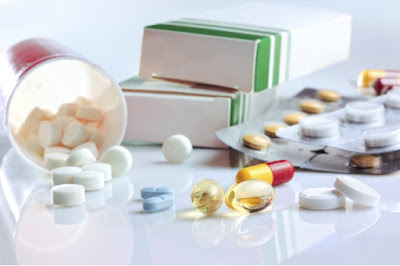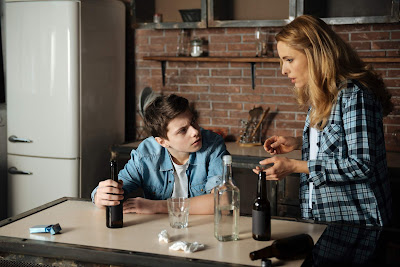Endone, Stillnox and other medications: Are Australian teens likely to be using prescription drugs in an attempt to get 'high'?
Two NRL players were recently rushed to hospital after being found unconscious at home after reportedly taking oxycodone, a painkiller prescribed following post-season surgeries. Four days later they left hospital and faced the media, with one of them quoted as saying - "We would like to say we've learnt from our mistakes and we hope everyone can learn from our lessons ... take prescription medication as it is (prescribed) on the prescription box."
As always with sportspeople who get caught out, what was said was well-scripted. We really didn't find out too much more about what had actually happened and there were lots of apologies and regrets. Since then a number of other footballers have talked about their issues with prescription drugs (particularly painkillers, but also antidepressants and antipsychotics) and the NRL have been at great pains to stress that this is not a rugby league problem only - the misuse of prescription drugs was a wider issue.
Most will remember the controversy around the use of Stillnox by six Australian male swimmers at the London Olympic Games in 2012 as part of a 'bonding session' and in 2009 members of the Queensland State of Origin team came under fire for using the same sleeping pill together with the energy drink Red Bull, reportedly creating a 'home-made party drug'. As with the story last week, these all involved elite sportspeople who are regularly drug-tested and that is why they're messing around with this type of drug use - they can have a 'good time' and yet, still avoid getting a positive drug test.
So what 'benefit' do they hope to get from using painkillers and sleeping medications? Read the stories carefully and you will see that whatever is being used is usually taken in conjunction with other products, usually alcohol, but sometimes energy drinks. I don't want this to be used as a 'how to' piece for young people but essentially mixing alcohol with painkillers can intensify the depressant effect, with users often talking about a 'pleasant floating effect', whilst those who take products like Stillnox try to 'fight the sleep', becoming lightheaded and disorientated. Essentially they're seeking a similar effect to that of being pleasantly drunk.
But what about Australian school-based young people? Do we know if they are messing around with prescription drugs in an attempt to get 'high'? According to the latest secondary school data, around 17% of students had used 'tranquilisers' (a range of drugs like Valium, Diazepam and Temazepam were listed in the related question) other than for medical reasons at some point in their life. The question used in the survey is always problematic and the report on the findings states that it is possible that students may not necessarily understand what 'non medical use' actually means. That said, I certainly do believe that there are young people who are playing around with medications, particularly in conjunction with alcohol, and stories of sportspeople messing around in this area do not help!
I've had a number of questions on my 'Real Deal on Drugs' blog for young people about mixing specific prescription drugs with alcohol (as well as other substances and products) and have chosen to answer those directly rather than post the answers on the site to avoid giving any others ideas about potential cocktails. They were looking for ways to either intensify the alcohol effect, maximize the alcohol effect but not drink as much or in the case of sleeping medications or anti-anxiety drugs like Xanax, try to experience the 'fight the sleep' effect that they have read about online or heard about from friends. In addition you also have the issue of some teens using particular medications such as ADHD drugs for either study purposes or their stimulant effect.
In the US prescription medications are now the most commonly abused substances by young people behind alcohol and cannabis. It certainly is an issue in this country but due to tighter restrictions around pharmaceuticals here I don't believe our problem is as great ... That said, with stories of high-profile sportspeople playing around with painkillers and the like in this way it is something we shouldn't ignore.
One of our greatest problems is that people (young and old) continue to believe that because these drugs are prescribed (i.e., you get them from a doctor), they're not dangerous. Let's make it very clear, many of the medications we get prescribed to us by doctors are far more toxic than those bought on the street. That is why, as the ads say, only take as directed (and even then, things can still go wrong!). We also tend to believe that because they are made in pharmaceutical laboratories and we know what is in each pill or capsule that somehow that makes them safe. Even when we know exactly what we're taking, there is absolutely no way that we can be sure of how we're going to react when we take it. Sure, knowing what is in it is much better than having no idea at all, but it does not mean it is completely safe. I know it sounds scary but every time we decide to pop any pill, capsule or tablet (legal, illegal or pharmaceutical) into our mouth there is an element of risk ...
So how can parents best protect their children in this area? Here are three simple and practical things that you can do to make sure that your teens have a healthy attitude towards prescription medications:
- Take an honest look at how you and your family use prescription medications. This can be a bit confronting but sit down with your partner and think about how many medications are currently being used by your family. Where are they kept and who dispenses them? If your child is using any medications have you sat down with them and talked through how they are to be used and the possible risks. Are you monitoring their use? Also be sure to be really honest about your own prescription drug use. Remember your child will learn more in this area (like almost every other) from watching you, i.e., if you're popping a whole pile of pills down every morning at breakfast without talking about how and why you're doing this, you're sending a very strong message about this type of drug use - one that isn't particularly healthy!
- Talk about medications and how your family uses them. The earlier you have this conversation the better - when they hit their mid to late teens this gets much more difficult to be a 'natural conversation' and can sound more like a lecture but do your best, whatever their age. This is best done the next time you take your child to see a doctor and they get a prescription. With your child present, take the time to ask the doctor what the medication is, the risks and how it should be used. When you pick it up from the chemist, make sure your child is with you at the counter to hear the conversation you have with the pharmacist about appropriate use and when you get the medication home, sit down and read the box and instructions together.
- Keep all family medications in one central location and monitor them. Although there are some young people who access pharmaceuticals through friends and growing numbers purchasing them on-line, most still get them from the family medicine cabinet (i.e., selling their own or sibling's ADHD medication to others, stealing a parent's pain medication or sleeping pill). Keeping all medication, including your own, in one place makes it easier to monitor and also to talk about. As they get older and want to have greater independence in this area allow them to collect their medication for the week (those plastic pill dispensers with compartments for each day of the week are really useful) but it is vital that you keep track of how many pills and tablets are being used each week and whether medications starts to occasionally get 'lost'.
As I said, the media conference given by the two NRL players was well-scripted and as such it did contain one very powerful message that parents across the country should have jumped on - "... take prescription medication as it is (prescribed) on the prescription box." These high-profile alcohol and other drug-related incidents, usually involving young male sportspeople are not helpful, but it is important that parents try to use them to their best advantage and have a healthy, positive discussion around some of the very real issues that young people may face in their future.




Comments
Post a Comment